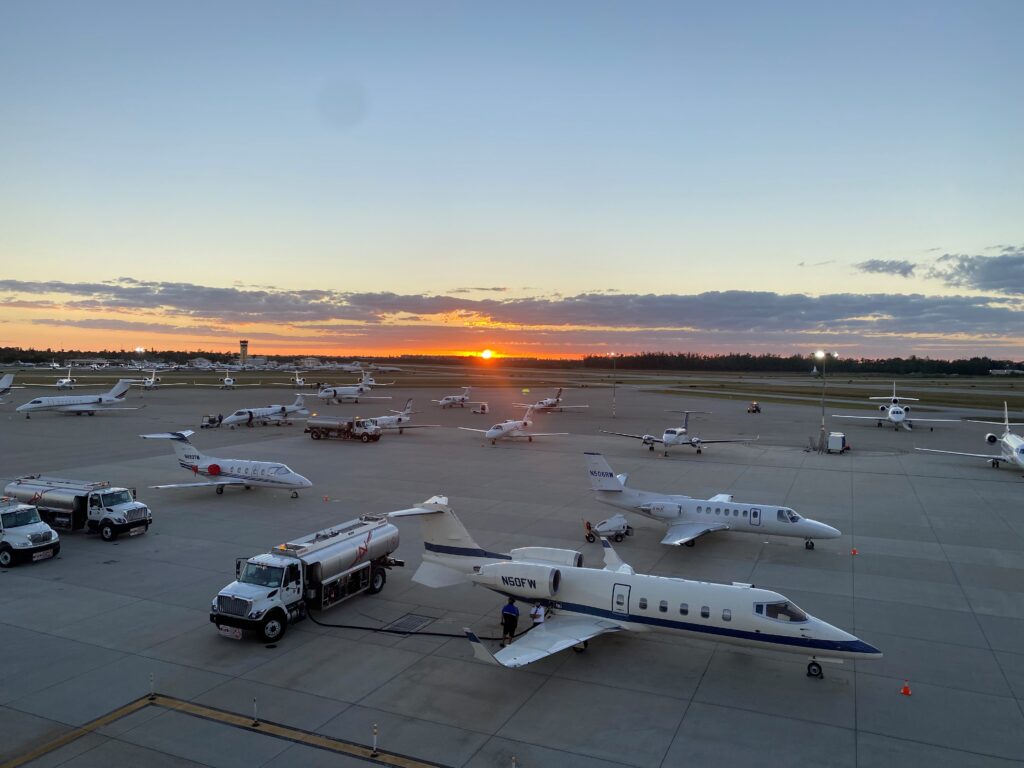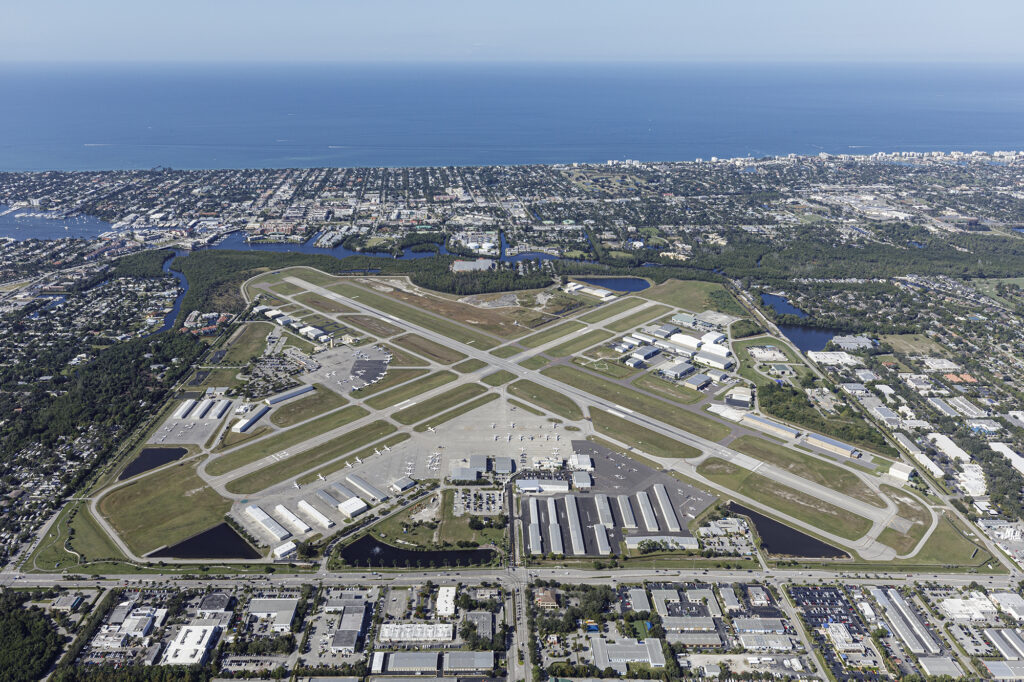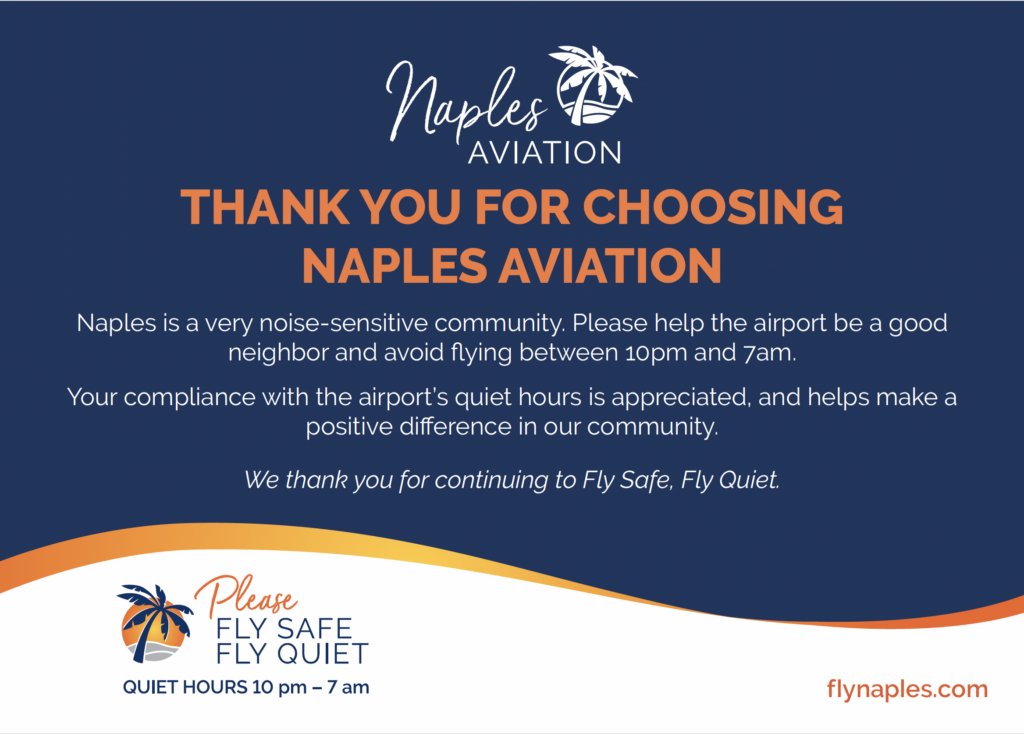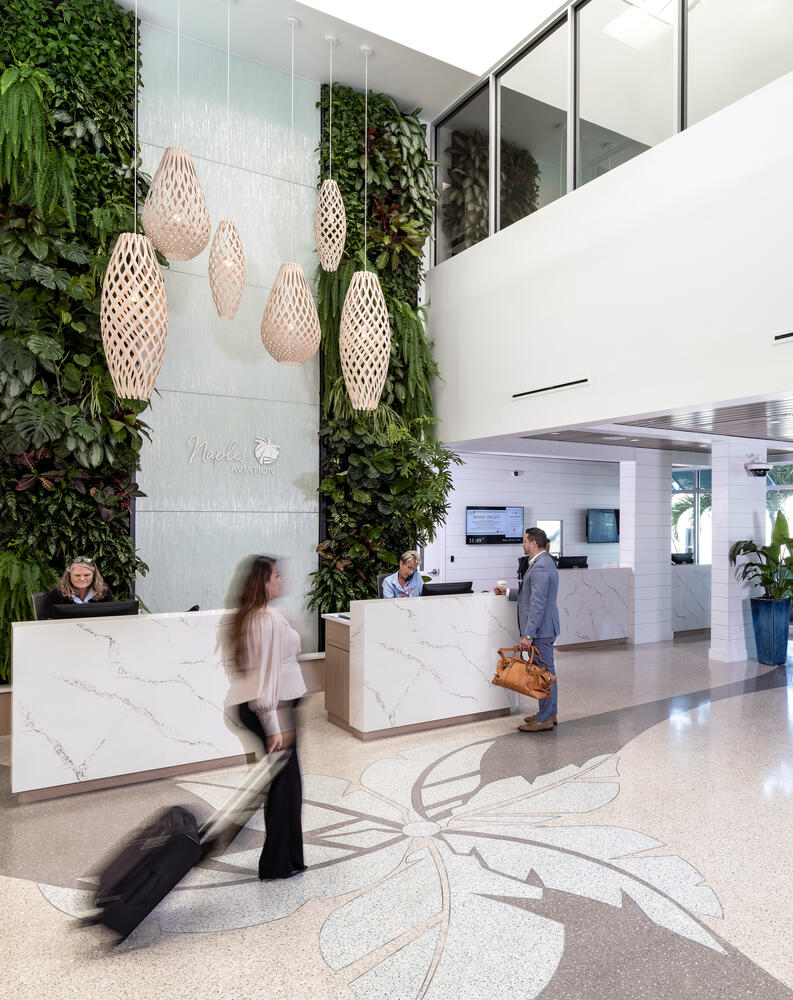Flying High: How Naples Airport Is Taking Off in Florida
Serving over 200,000 passengers annually, this world-class general aviation airport ensures an exceptional journey amidst breathtaking views
July 19, 2023

Photo: Courtesy of the Naples Airport Authority
Nestled along Florida’s sun-kissed Gulf Coast lies Naples, a world-class destination renowned for its stunning beaches, vibrant downtown, high-end shopping, and picturesque views of the Gulf of Mexico.
Among the many factors contributing to Naples’ allure is its gateway to the world: Naples Airport. Under the stewardship of Chris Rozansky, Executive Director of the Naples Airport Authority, the airport has embraced a vision of providing a first and lasting impression of excellence to every traveler passing through its gates.

Photo: Courtesy of the Naples Airport Authority
“With Naples being a world-class destination, we strive to provide an exceptional experience,” says Rozansky. “The airport and our Fixed Base Operator (FBO) are often the first and last thing a visitor or returning resident sees, and everything we do is focused on providing that first and lasting impression of excellence.”
Catering to both visitors and returning residents, Naples Airport serves over 200,000 passengers annually through general and private aviation only. According to a study conducted by the Florida Department of Transportation, the airport generates over $781 million in economic activity each year and supports more than 3,000 jobs in the region.
Peak Traffic During Winter
This airport is among the top 20 in the country for private jet activity, with a high number of flights originating from Teterboro (New York area), White Plains, and several Chicago area airports. This trend is especially prominent during peak winter when large groups of passengers seek to escape the cold and travel to the warm, soothing Florida weather.
The U.S. Customs and Border Protection office at the airport is ready to accommodate the large volume of international flights arriving from various destinations.

Photo: Courtesy of the Naples Airport Authority
However, the popularity of Naples as a winter getaway destination also brings about unique challenges, with about two-thirds of the airport’s traffic occurring within a concentrated five-month period. Last year, for example, the airport serviced over 122,000 operations, with about 65 percent occurring between October and February.
According to Rozansky, air traffic control congestion during this period can lead to considerable delays for departing aircraft—one of his biggest obstacles.
The Federal Aviation Administration’s (FAA) current staffing shortage and airspace congestion adds to the challenge of ensuring timely departures. As a result, the airport is actively asking pilots to adjust their schedules during peak periods to circumvent the possibility of experiencing lengthy delays.
With this in mind, safety and community awareness have been a top priority at Naples Airport, and their efforts have been recognized by the FAA.

Photo: Courtesy of the Naples Airport Authority
Last year, the airport was honored with an FAA award for implementing numerous safety improvements on the airfield, including measures to enhance stormwater drainage and reduce wildlife attractants around the airport. Such initiatives are especially challenging in Florida, where airports are commonly situated near bodies of water and protected lands.
Similarly, the airport tries to be a considerate neighbor by using noise reduction methods to minimize the disturbance caused by airplanes taking off and landing for the nearby residents.
“We have a dedicated staff that works diligently on our noise program called Fly Safe Fly Quiet,” Rozansky explains. “We provide passengers and pilots with pamphlets containing helpful points to minimize noise disruptions, and value their cooperation in being a good neighbor by observing quiet hours between 10 p.m. and 7 a.m.” He further advises that winter-month travelers try to avoid peak operational periods between 10 a.m. and 4 p.m. to avoid potential delays.

Photo: Courtesy of the Naples Airport Authority
Thanks to the solid promotion and partnerships with major aircraft operators, the airport has achieved nearly 99 percent compliance with this curfew, significantly reducing noise disturbances for nearby residents during late evenings and early mornings.
Commercial Flights? No need
Naples Airport prides itself on its dedication to general aviation and private air travel. The limitations of its runway and taxiways’ weight-bearing capacity, however, restrict the airport’s ability to accommodate larger commercial airlines.
While some in the community may wish for commercial airline service to return, the financial viability and changes in fleet requirements make it unlikely. “I do think there are people in the community who ask if we’ll ever get that service back,” admits Rozansky, “but with the aircraft weight limitation we have, it really diminishes the opportunity for any meaningful air service.”

Photo: Courtesy of the Naples Airport Authority
According to Rozansky, the airport he manages has become unfeasible in the commercial aviation sector. This situation is attributed to airlines shying away from aircraft with a capacity of 50 to 70 seats and instead opting for larger and heavier ones. Additionally, the industry is grappling with a severe pilot shortage, resulting in airlines prioritizing destinations that yield higher returns.
As a result, Rozansky believes that the Southwest Florida International Airport in Fort Myers is the right hub for airline service in the region. “We’ve noticed that many locals even travel to Fort Lauderdale or Punta Gorda for more affordable commercial flights,” he says. “So, although it may seem convenient to have airlines operating in Naples, would you be willing to pay $150 or more for a flight on a commercial plane? I would say that suddenly, a 30-minute drive to Fort Myers doesn’t sound so bad after all,” he notes.
Finding Its Place
Nevertheless, the Executive Director of the Naples Airport Authority assures that the services provided already meet the needs of their customers, and the airport continues to focus on bolstering general aviation and private air travel.
In a region where multiple airports coexist, Naples Airport stands as a critical player, complementing its sister airports throughout Southwest Florida as a major private and general aviation handler.
By upholding its vision of providing an exceptional experience and being sensitive to the noise impacts generated, the airport ensures that every traveler’s journey begins and ends with the warmth and hospitality that have come to define Naples—a paradise worth cherishing for residents and visitors alike.




